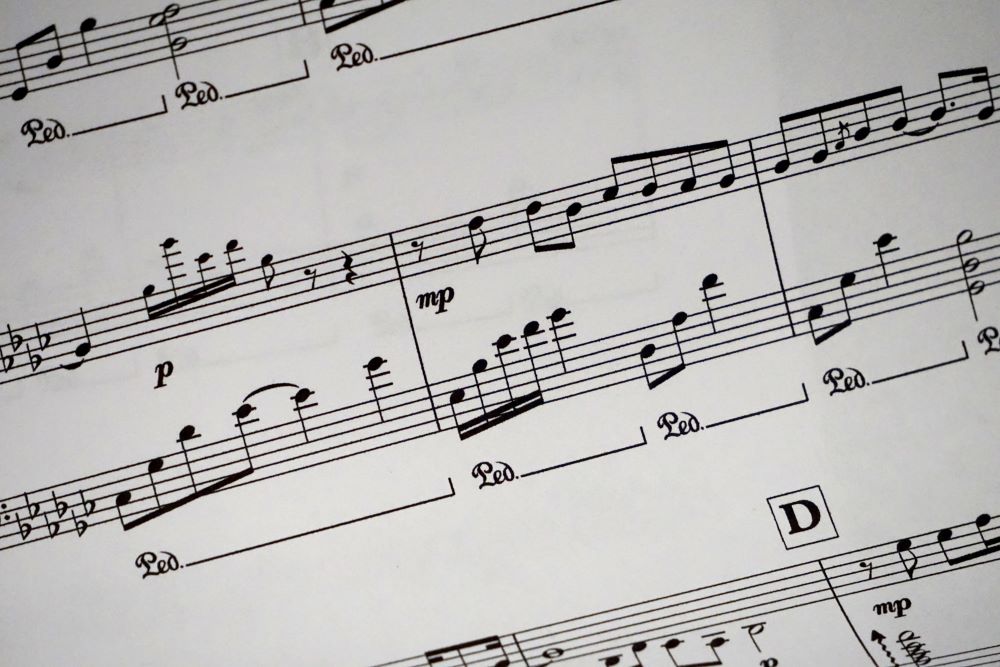- DSI CLEAR
- Theory & Practice
- Accessibility Online
- Keyboard Navigation
- Headings, Lists & Tables
- Text Formatting & Links
- Images & Alt Text
- Shapes, Texture, & Color Contrast
- Saving Accessible PDFs from Microsoft Office
- Checking & Fixing PDFs for Accessibility
- Fillable PDF Forms
- Audio & Video Captioning
- Publisher & Third Party Content Accessibility Tips
- Content Language Accessibility
- STEM Accessibility
- Music Accessibility
- Relating Score and Sound for Accessibility
- Describing Musical Examples with Text and Alt Text
- Braille Music Resources
- Screen Reader Integration with Notation Software
- MIDI Playback Visualization
- Sonic Analysis Visualization
- Other Tools and Resources for Music Accessibility
- Glossary of Accessibility Terms
- Compliance Checklist
- SensusAccess
- Copyright Guide
- Online Teaching
- UNT Syllabus Template
- UNT Teaching Excellence Handbook
- Teaching Consultation Request
Music Accessibility
Digital Accessibility for Music Courses
Introduction

Online music courses offer great opportunities for students of all circumstances to access the world-class education of UNT’s College of Music. With that in mind, it is important to ensure all of UNT’s online digital courses meet the federal standards of Accessibility Compliance. This page will outline tips and strategies to use various assistive technologies designed to help online learners of all abilities and circumstances.
PLEASE NOTE: Accessibility is an ever growing and ever evolving field. As we research new technology and develop new strategies, this page will update to offer the best accessible options we can provide for our students.
Before You Get Started
Accessibility encompasses a wide array of adjustments, strategies, and considerations to ensure students can gain meaningful interaction with your online course. Please take the time to review the following information to help gain perspective on the best ways to ensure accessibility in a way that won’t overwhelm you.
Obstacles to Music Accessibility
As with many fields of study, there are obstacles unique to the subject matter regarding Accessibility in the field of music. The following obstacles were considering when developing our current strategies for Music Accessibility:
- The relationship between music and hearing
- Lack of up-to-date screen reader support for music notation and digital music interfaces (engraving software, digital audio workstations, etc.)
Please keep the above considerations in mind when reviewing the resources and activities you are considering for your course, and note the tips outlined below which are developed to assist in making this content Accessible
Key Strategies to Music Accessibility
To help guide your process for making Accessible music courses online, we provide the following basic strategies. Please keep these concepts in mind in developing your online music course:
- Provide options for meaningful interpretation of important elements in sheet music not reliant on vision.
- Provide options for meaningful interpretation of important elements in musical audio recordings not reliant on hearing.
- Provide options for students to engage and contribute to course activities that make allowances for the above considerations.
Ultimately, the best first strategy you can take to make your music course accessible is to explore options.
Please Note: The strength of accessibility lies in variety of options. There are many ways to assist or otherwise accommodate students with disabilities, in ways tailored to their specific needs. Should you be seeking specific guidance not explored in this page, please reach out to us by submitting a consultation request and we can discuss options with you.
Content Bookmark Links
- Relating Score and Sound for Accessibility
- Describing Musical Excerpts with Text and Alt Text
- How to write musical alt text for screen readers
- Braille Music Resources
- Scanning Sheet music for Braille
- Notes on Braille Music
- Scanning Sheet music for Braille
- Screen Reader Integration with Notation Software
- MuseScore
- MIDI Playback Visualization
- MIDITrail
- Sonic Analysis Visualization
- Spectrogram / Spectrum analyzer
- Other Tools and Resources for Music Accessibility
- Reaper Digital Audio Workstations and Screen Readers
- Chord Chart reading with Voiceover in iReal Pro
- Bone Conduction Keyboard via Music Vibes
- Visual Music Experiments via Chrome Music Lab
- Gesture-based Music via Adaptive use Musical Instrument (AUMI)